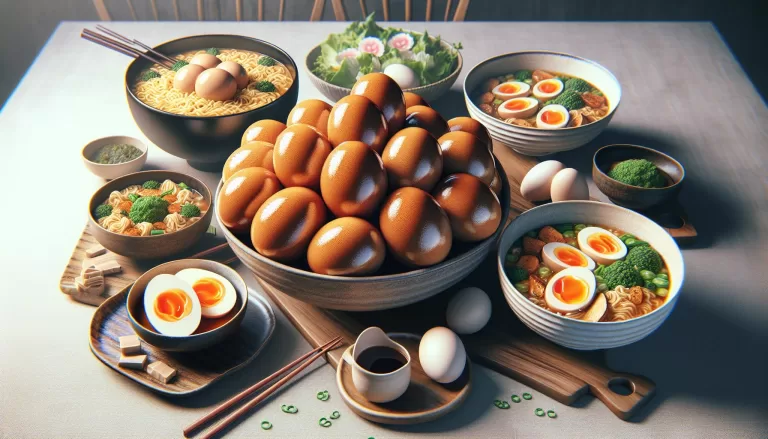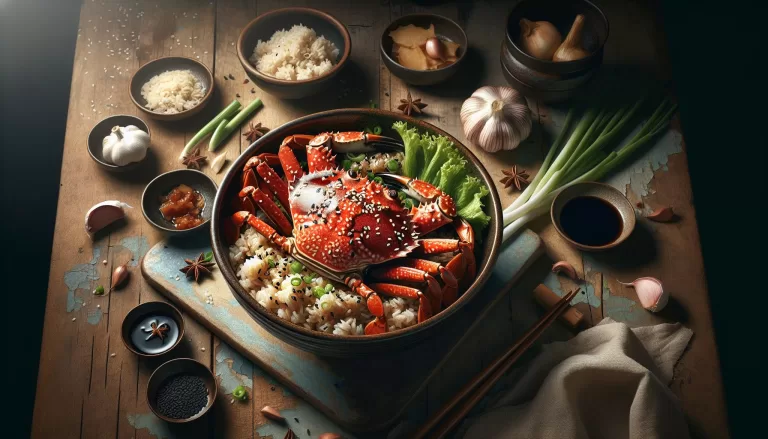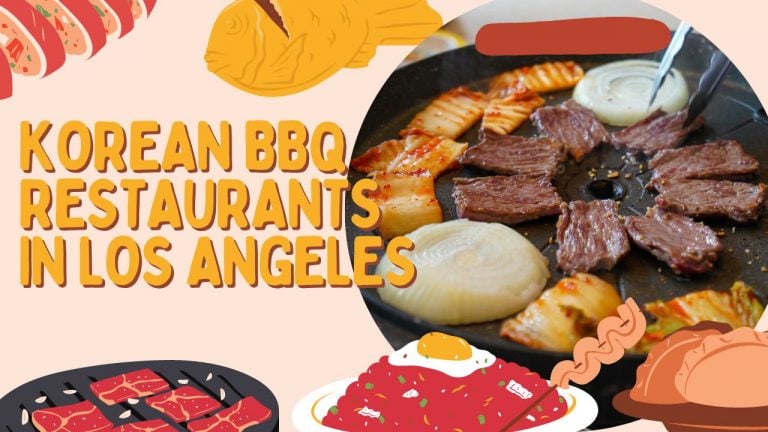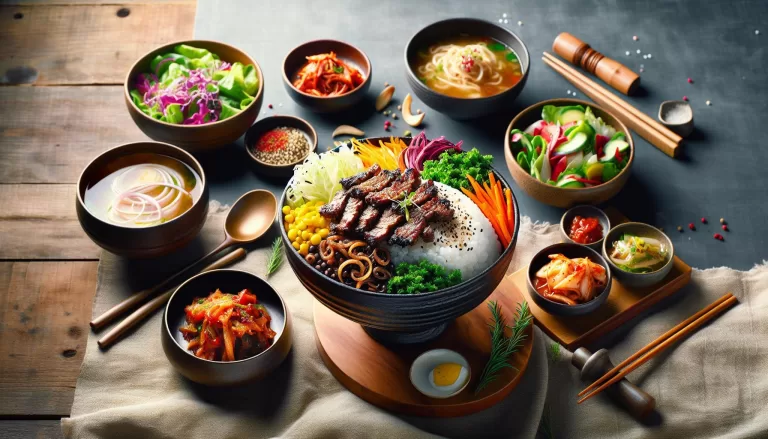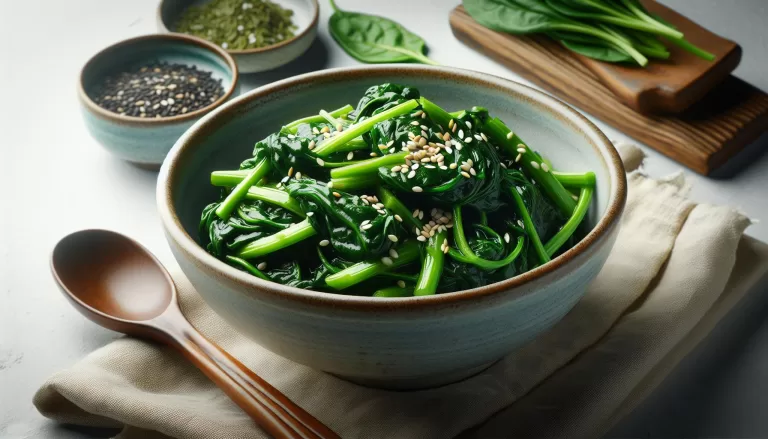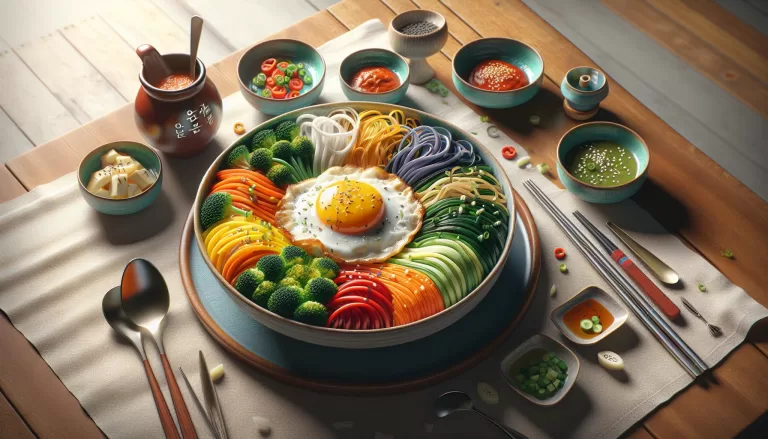Easy and Nutritious Homemade Manduguk Korean Dumpling Soup Recipe
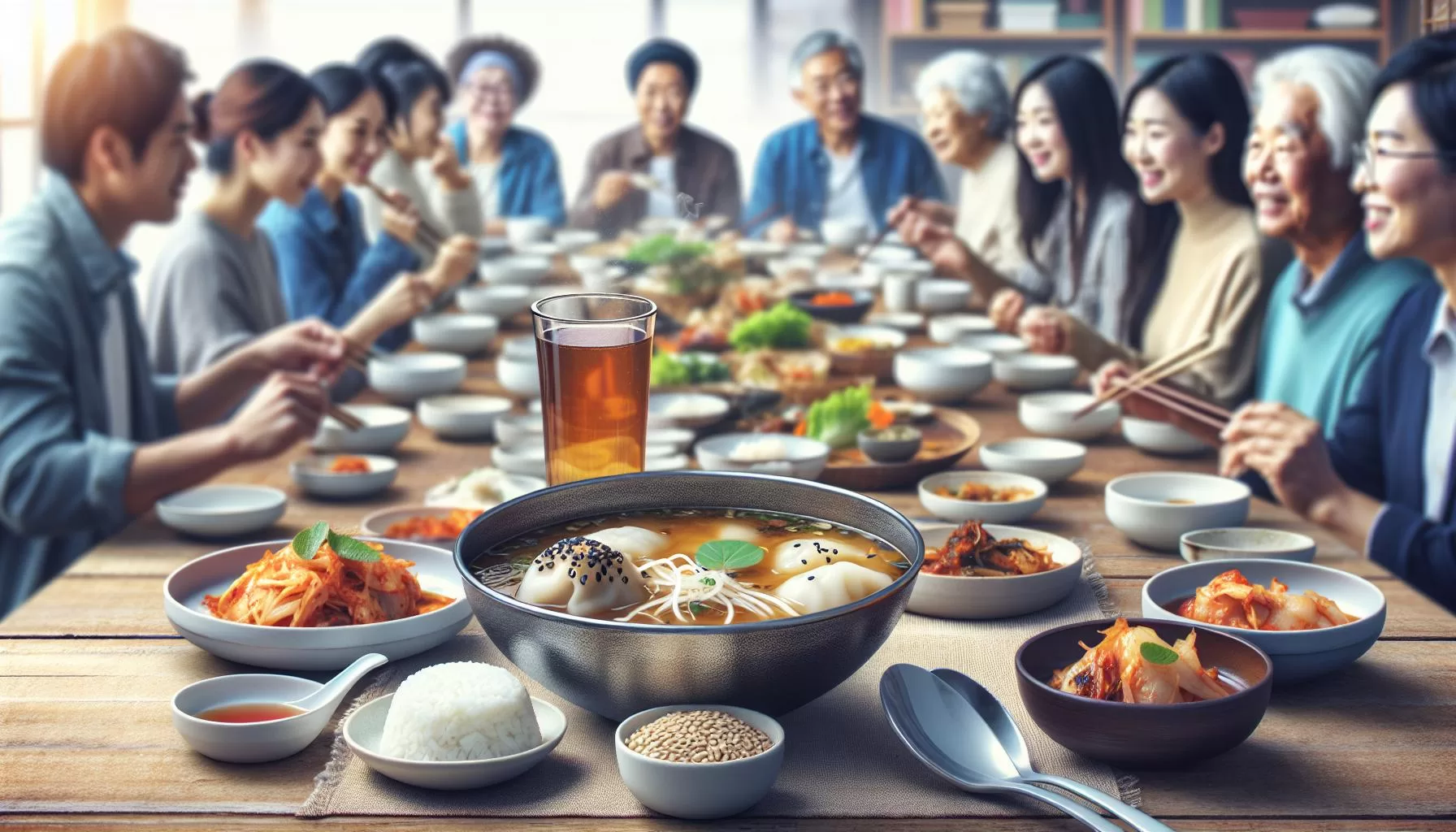
Choosing the Right Dumplings
One key aspect of Manduguk is the dumplings. It’s not just about choosing any dumpling – you want ones that’ll soak up the flavors and hold their own in this hearty soup. It’s a tall order, but don’t worry – here are some insights to guide you.
Frozen dumplings are the easiest and quickest option. You’ll find a wide array of varieties in most grocery stores. Look out for those labeled as “Korean dumplings”. They’ve been specifically crafted to withstand slow, simmering cooking methods while retaining their delicious fillings.
Then we have homemade dumplings, which give you complete control over what goes inside. Yes, crafting your own dumplings require time and patience but it can prove to be a rewarding culinary adventure.
- For the filling, ground pork is traditional but you can sub in chicken or tofu for a lighter variant. Fresh garlic and chives add a punch of flavor, and a pinch of salt enhances all these tastes.
- For the dough, you’ll need flour, hot water, and salt. It’s crucial to get the dough’s texture right. Too firm, and your dumplings will turn out tough; too soft, and they might fall apart in the soup.
You may also consider store-bought fresh dumplings usually available in Asian markets. They strike a balance between ease and quality.
But, what if you can’t access Korean dumplings? You can always choose another type: Japanese gyoza, Chinese jiaozi or wontons would work too. They’re similar in makeup and, when cooked in Manduguk, can offer a delightful spin on this Korean classic.
Gathering Ingredients for the Broth

Starting on the broth, you’ll want to be sure to select quality ingredients that’ll help you achieve the authentic taste of Manduguk. Pay close attention to the details as it’s the backbone of this dish. Manduguk broth is light but deeply flavorful, thanks to its unique components.
Your primary ingredients will be beef brisket and kelp. A serving for four individuals requires about 8 ounces of beef brisket and a piece of kelp about 2×2 inches.
| Ingredient | Quantity |
|---|---|
| Beef brisket | 8 ounces |
| Kelp | 2×2 inches |
The use of beef brisket gives the soup its depth of meaty flavor while the kelp introduces a subtle umami touch. If you’re a fan of ultra-rich broths, you may want to consider adding a tablespoon of beef bone marrow. It’s not a traditional component but it does propel the taste to another level.
Next up, don’t skimp on these essential seasonings: soy sauce, salt, garlic, and pepper. A liter of water, 2 tablespoons of soy sauce, a teaspoon each of salt, minced garlic and ground black pepper will hit just the right balance of savory notes.
| Ingredient | Quantity |
|---|---|
| Water | 1 liter |
| Soy sauce | 2 tablespoons |
| Salt | 1 teaspoon |
| Minced garlic | 1 teaspoon |
| Ground black pepper | 1 teaspoon |
Remember, altering your dish’s flavor isn’t just about adding, it’s also about balancing. Opposing flavors work together to produce harmony in your soup. However, don’t be afraid to add your own twists. Experimentation is part of the cooking process.
Do keep in mind that this is only one variation of Manduguk broth. There are different regional variants of this dish within Korea and each region has its own set of unique tweaks. Some add anchovy sauce or swap the beef brisket for pork. Explore and find out what works best for your palate.
Making the Flavorful Broth
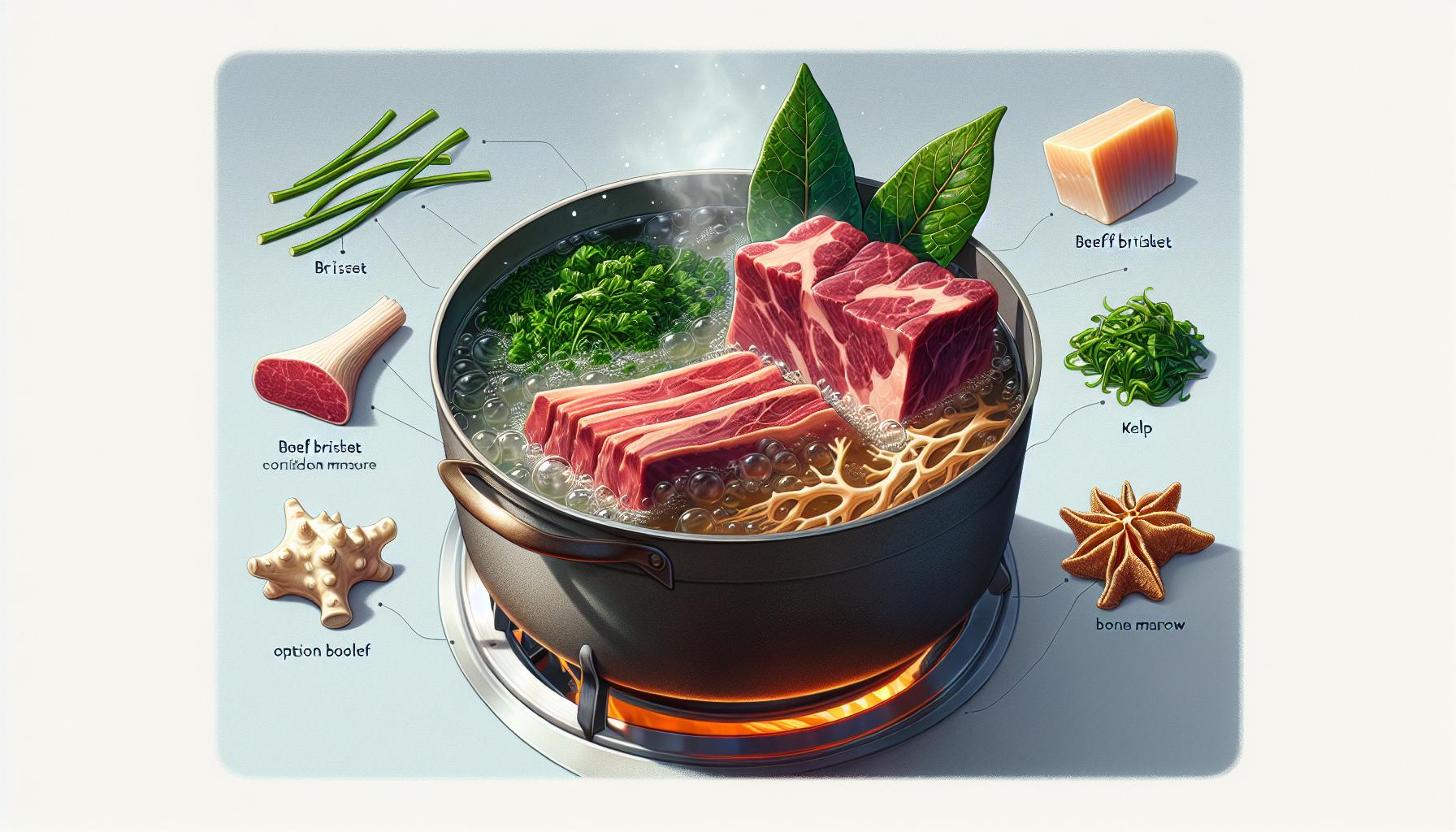
Kickstart this homemade Manduguk adventure by focusing on the broth. It’s the backbone of your soup, providing an aromatic and tasty base. Your beef brisket and kelp couplings initiate this delectable process. Ensure high-quality ingredients at your disposal to elevate your dish’s flavor profile.
First, submerge your 200-gram beef brisket and 10g of kelp in 2 liters of cold water. Let the ingredients sit uncovered on medium heat. Keep extra vigilance during this phase. It’s critical to discard any scum or foam that begins to form on the surface. This step intensifies your broth’s clarity and improves its overall taste.
Care to give your recipe an extra twist? Some folks swear by beef bone marrow. Using 50 grams of bone marrow can enrich your broth’s taste, giving it a deeper, savored note. Simply add the marrow at the beginning with the brisket and kelp.
Coming to mandate seasonings, there’s a bit of wiggle room for customization. Traditional Manduguk calls for an uncomplicated mix of soy sauce, salt, pepper, and minced garlic. It’s up to you whether to add these flavor enhancers in the beginning or later in the cooking process.
Depending on your preference, you might just want to bloom the garlic in heated oil beforehand to add a tasteful punch. Nutrition-conscious readers would be glad to know garlic is a rich source of vitamin B6 and C. Not to mention, it’s an excellent immune-booster!
While there’s a generalized recipe structure for Manduguk, let’s not forget its regional variations scattered across Korea. One popular iteration suggests swirling in anchovy sauce or swapping the beef brisket. So, if you’re more attuned to pork, you’re well within tradition to switch it up!
Remember, culinary journeys are all about experimenting today and refining tomorrow. So, consider the measurements and ingredients stated as a guide rather than a binding contract. Feel free to twirl your spoon in a way that caters to your taste buds most flawlessly. Enjoy the richness and the depths these variations add to your Manduguk broth. It’s a flavor-ride unlike any other! Altogether, this process should take about 2 to 3 hours. So, relax and let the magic simmer!
| Ingredient | Quantity |
|---|---|
Assembling and Cooking the Soup
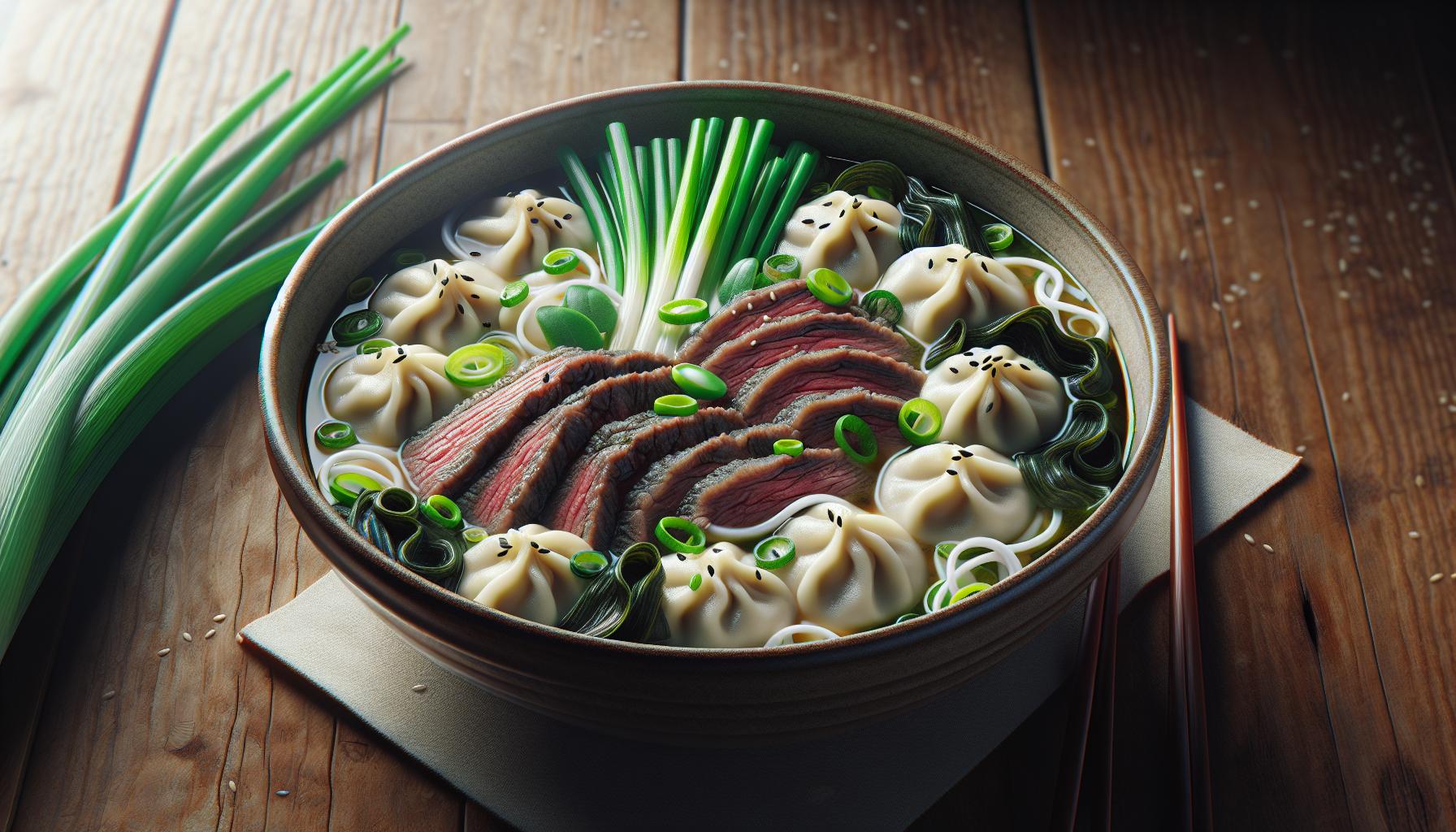
Now that your broth has embodied all those rich flavors, it’s time to assemble your Manduguk! It’s the stage where your soup comes to life with dumplings, brisket slices, and a slew of aromatic greens.
Ingredient List
Before we dive into the cooking process, let’s review what you’ll need.
- 20-25 dumplings
- 250 grams of thinly sliced brisket
- 3 green onions, chopped
- 250 grams of soaked seaweed
- 3 cloves minced garlic
Remember, the quality of your dumplings can make or break your Manduguk. Whether you’re crafting them from scratch or opting for store-bought, choose wisely, and favor quality!
Incorporating the Elements
Start by adding your dumplings to the broth. Let them simmer for about 10-12 minutes, until they float to the surface and turn translucent. It’s crucial not to rush this process. Quality dumplings need time to soak up the delicious broth.
While waiting for the dumplings, reduce heat to low. Take a moment to prepare your brisket slices by seasoning them with salt, pepper, and minced garlic. Saute on medium heat until they’re golden yet juicy. Ensure the meat is well-seared and aromatic; it’s a part of the soup’s appeal.
When your dumplings are ready, it’s time to incorporate the rest of the elements. Add the cooked brisket, seaweed, and green onions. Stir everything and give it a sample. Now’s the time to perform the final taste check, tweaking the final seasoning as needed. Serve your Manduguk piping hot with a garnishing of sesame seeds for an extra aesthetic touch.
Serving and Enjoying Your Manduguk

Now that you’ve got your piping-hot Manduguk ready, it’s time to serve and enjoy it right. But hold on, you might wonder how to ace this part. Don’t fret; we’ve got you covered.
Pour the fragrant soup into individual bowls, ensuring each gets an equal share of dumplings, brisket, and veggies. Lay a generous sprinkle of sesame seeds on top. Careful, they’re not just for the looks but add a beautiful crunchy texture too.
But what’s more delightful than enjoying Manduguk with a couple of sides! Traditional accompaniments include kimchi and a bowl of steamed rice. Additionally, a glass of cool barley tea, a common Korean staple, strikes just the right balance with the heartiness of the soup.
Let’s not forget the art of eating it. Korean meals are often family affairs where everyone shares and enjoys the meal together. So, gather your loved ones around the table, grab your spoons, and relish the warm, comforting Manduguk.
While relishing the soup, pay attention to the symphony of flavors. Savory dumplings, tender brisket, umami-rich seaweed, and the sharpness of the green onions. Each spoonful is an explosion of taste and texture in your mouth.
But here’s an exciting part, you can personalize your Manduguk, yep! Feel free to add a dash of soy sauce or a sprinkle of chili powder for that extra kick.
Before we round off this section, there’s one more bit of information that might pique your interest – the nutritional value. Manduguk isn’t just delicious; it packs in a host of essential nutrients too.
| Nutrient | Amount per Serving |
|---|---|
| Calories | 295 |
| Carbs | 34g |
| Protein | 19g |
| Fat | 10g |
| Vitamins | A, B, C, D, E |
Whether you’re a calorie counter or a protein packer, this one’s got something for everyone. Enjoy this wholesome, nutritious dish that is as good for your body as it is for your taste buds.
Now let’s get ready for the next stage where we’ll delve a bit more into the cultural significance of Manduguk. But that’s a story for another section.
Conclusion
So, you’ve learned how to make your own Manduguk, a comforting bowl of Korean dumpling soup. Remember, it’s not just about the taste, but also the experience of sharing a meal with loved ones. Don’t forget to garnish your soup with sesame seeds and enjoy it with some kimchi, steamed rice, and barley tea. Personalize your Manduguk with a dash of soy sauce or chili powder to suit your palate. It’s a dish that’s not only rich in flavor but also packed with essential nutrients. Looking forward to exploring more about the cultural significance of Manduguk? Stay tuned for our next post. Enjoy your culinary journey!
